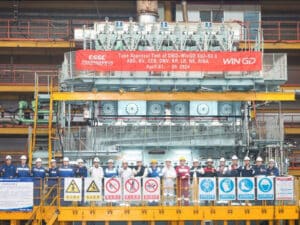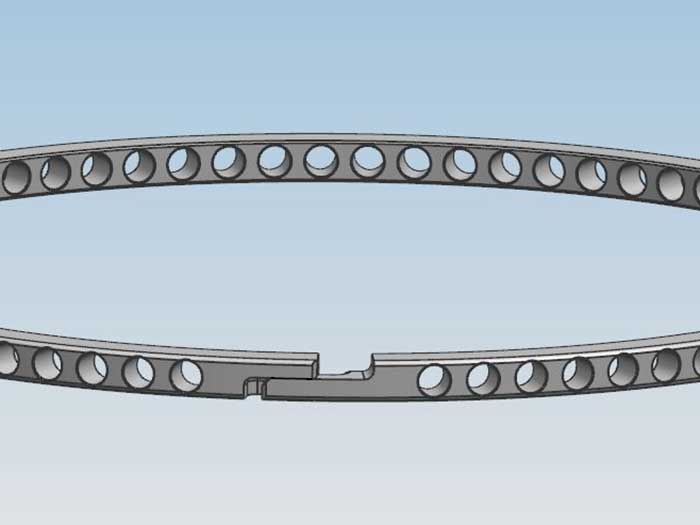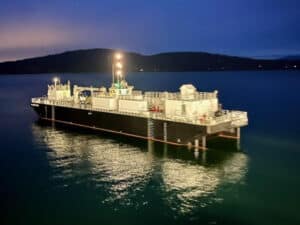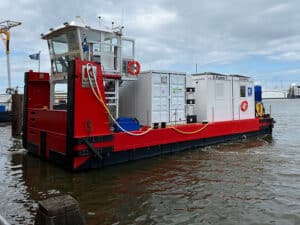
WinGD unveils new piston ring concept
Written by Nick Blenkey
CAD depiction of the new FRC piston ring design (gas tight top ring shown)
APRIL 5, 2017 — A new piston ring concept unveiled by Winterthur Gas & Diesel (WinGD) is based on the well-known and proven piston ring design used in WinGD two-stroke marine diesel engines in vessels all over the globe.
However, unlike conventional piston rings, the running surface has been modified with what most of us would call holes, but which WinGD terms “friction reduction cavities (FRCs).” These not only reduce the amount of surface needing lubrication, but further reduce friction by utilizing the air entrapped within them for lubrication.
WinGD says that, compared to conventional cylinder lubrication oils of the SAE 50 grade having kinematic viscosities of 16.3-21.9 cSt at 100°C, the utilization of FRC entrapped air reduces kinematic viscosity to a mere 1.8 cSt at 100°C. This yield tremendously reduced friction coefficients for the piston ring/ liner system at ever-increasing mean piston speeds, while acting as an ideal insulation material to avoid unintentional heat transfer.
The manufacturing costs for FRC piston rings will be slightly higher than for conventional piston rings due to additional manufacturing steps of machining the cavities into the piston ring running surface.
However, the material removed in this process contributes directly to the overall weight saving of up to 40% in comparison to traditional designs.
When considering the high accelerations and speeds of the piston rings during engine running, the resulting lower masses in motion lead to additional fuel savings.
WinGD says that reliability and time between overhauls are not compromised, with the lower reciprocating masses are anticipated to lead to lower wear of the piston ring groove, resulting in longer times between overhaul or reconditioning of the piston crown.
The achieved savings in fuel consumption and overhaul costs strongly outweigh the higher component price within a minimum duration of typical vessel operation in the field.
Additionally, lube oil savings may be realized from FRC piston ring development due to the partial replacement of lubrication oil with entrapped air. WinGD says that first indications are very promising and detailed investigations are ongoing.
Picture of gas tight FRC piston top ring in comparison to standard execution






Leave a Reply
You must be logged in to post a comment.